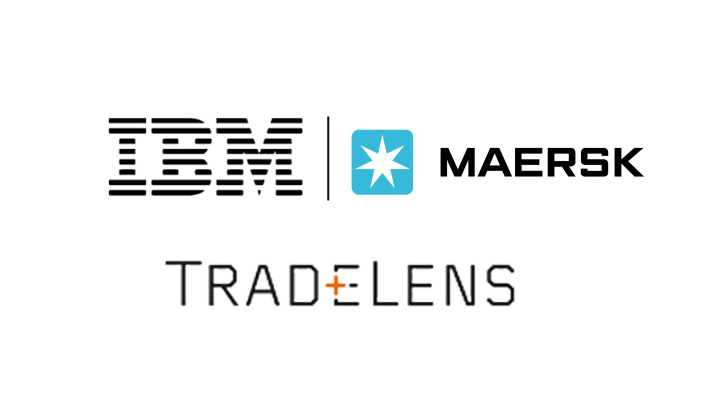The blockchain technology spreads. Mainly this can be visible in the context of cryptocurrencies popularity gain (which can be noticed by rising Bitcoin price). Blockchain became useful or even created plenty of new branches like tokenization which who knows – maybe will revolutionize the investments and the way we represent the ownership in general.
It’s truth that the because of the general idea and construction desired revolution is expected from the public blockchains. From the blockchains which are truly decentralized, which are trustless, which are not controlled by anyone (at least in theory). The revolution which has the root in the technology not existing before. The technology which gives the possibility to define new way, new rules, to start some things from scratch.
At least this the vision I believe.
Back on Earth – blockchain technology is not only that. There are a lot of less exciting business branches, possible usage of blockchain or even digital cryptocurrency however with “restrictions” making impossible to use public blockchains. Let’s take a look to this world.
Closed blockchain

What’s the closed blockchain? What I mean by closed blockchain is technically speaking permissioned blockchain. It’s general term to describe kind of blockchain technology where the main difference between public blockchain is based on the access. In other words:
access to public blockchain has everybody, access to permissioned blockchain have only the chosen
This significant difference somehow completely changes the idea of the blockchain: it’s not transparent, it’s not decentralized (since we cannot become part of the network). However this difference is subjective, it’s just a matter of scope: permissioned blockchains are still transparent and decentralized but only among the group of participants. The major difference between the public and permissioned blockchain is a scope: everyone who wants to join the network vs. chosen group of participants who has the right to be part of the network. On the technical level this access is resolved by cryptograhy. Permissioned blockchains are also very configurable and tweakable (from technical point of view) what make them attractive for specific business use cases.
Permissioned blockchain use case
It’s probably not tough to guess that there are business use cases where the blockchain technology mechanics gives the value, but main requirement is to make it permissioned – available only for chosen. A lot of use cases can be found for banking sector – immutability of the blockchain gives the huge value for trustless and third party free data exchange processes (so there is big sense of blockchain use) however privacy must be kept on the maximum level. These are however quite boring examples, let’s take a look to something more interesting.
The supply chain is general group of business problems where the blockchain gives the great value. Recording the “chain” of changes most often related to some supply chain process done with blockchain enables time and cost reduction. This is just pure blockchain feature: recording the changes. Because change log is immutable and everything can be done without any third parties involved – blockchain found the usage in that area.

TradeLens is great example of supply chain blockchain platform. It’s focused on the sea transport supply chain: recording and tracking the shipment between parties (companies) taking part in the chain.
TradeLens lets you track a shipment through over 120 planned, estimated and actual events in real time. TradeLens is built with a permissioned blockchain to guarantee the immutability and traceability of shipping documents on the platform.
The solution is based on IBM Blockchain (which is based on Hyperledger Fabric) – so basically permissioned blockchain technology. The usage of persmissioned blockchain gives such benefits like a performance improvement (permissioned blockchains are much faster than public). From the business perspective – it’s dedicated to closed group of parties, so there is probably requirement of data confidentiality, which is fulfilled since access to the network must be granted. From the supply chain parties perspective – the value is given in blockchain immutability – the changes in the supply chain are saved in the blockchain, so there is no place for cheating.
Another example would be IBM Food Trust.

This is the example of the project where normal people can benefit from the blockchain technology. Imagine going to the shop, taking a product, scanning it’s bar code and take a look at it’s history: who produced that product, who took part in every stage of product delivery to the market. Sounds good? Scarry for me, but somehow valuable in the same time – especially in the world where it can be felt very often that we loose control (about what we see, what we buy, what we eat, etc.). IBM product is focused on tracking food supply chain, so again it “tracks” the history of the food: from the seed to the market. Participants of such chain record the changes (like sending the product, packaging the product, etc.). The blockchain in that case provides the backbone – secure rules for data storage and changes recording. The enduser – customer in the shop would have no idea about blockchain behind. The parties involved in the supply chain process: producers, suppliers, manufacturers… – these are the participants of the blockchain network. Permissioned blockchain again in that example restricts the access to the network only for the participants involved directly in the supply chain flow.
Do we need to be closed?
It’s probably worth to mention that permissioned blockchain solutions would be done in the public blockchains. The privacy would be maintained by encrypting the data and the access restriction would be realized by the smart contract rules. However all of these tweaks will not provide better privacy than a “private” blockchain, hidden for everyone not involved. The permissioned blockchains in most cases give the full “control” about the blockchain network. In many business branches such technology control is just essential. This the reason why closed blockchains will evolve if we want it or not. In most cases the technology behind will be just a backbone and will be hided for enduser, but still will give a hidden value.
I do blockchain 🙂 If you would need expertise in public/permissioned blockchain space – just contact me. Przemek

